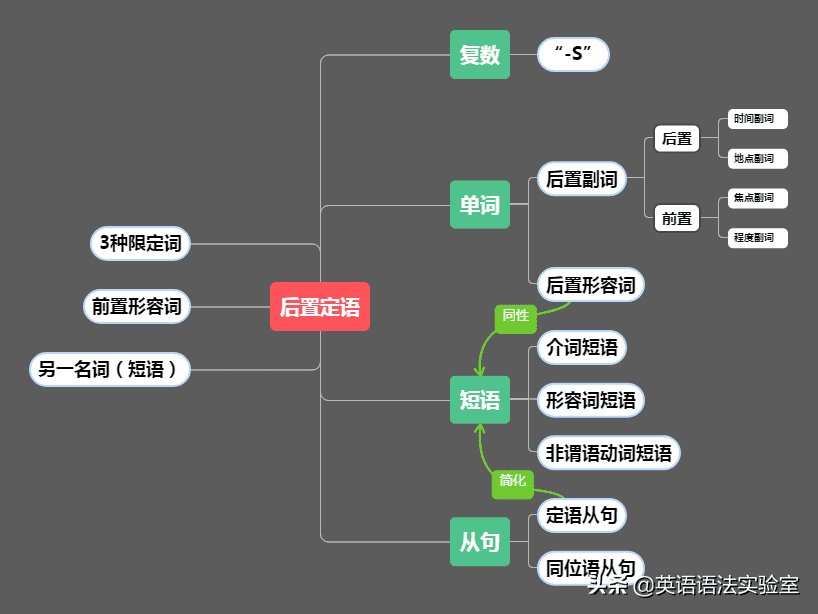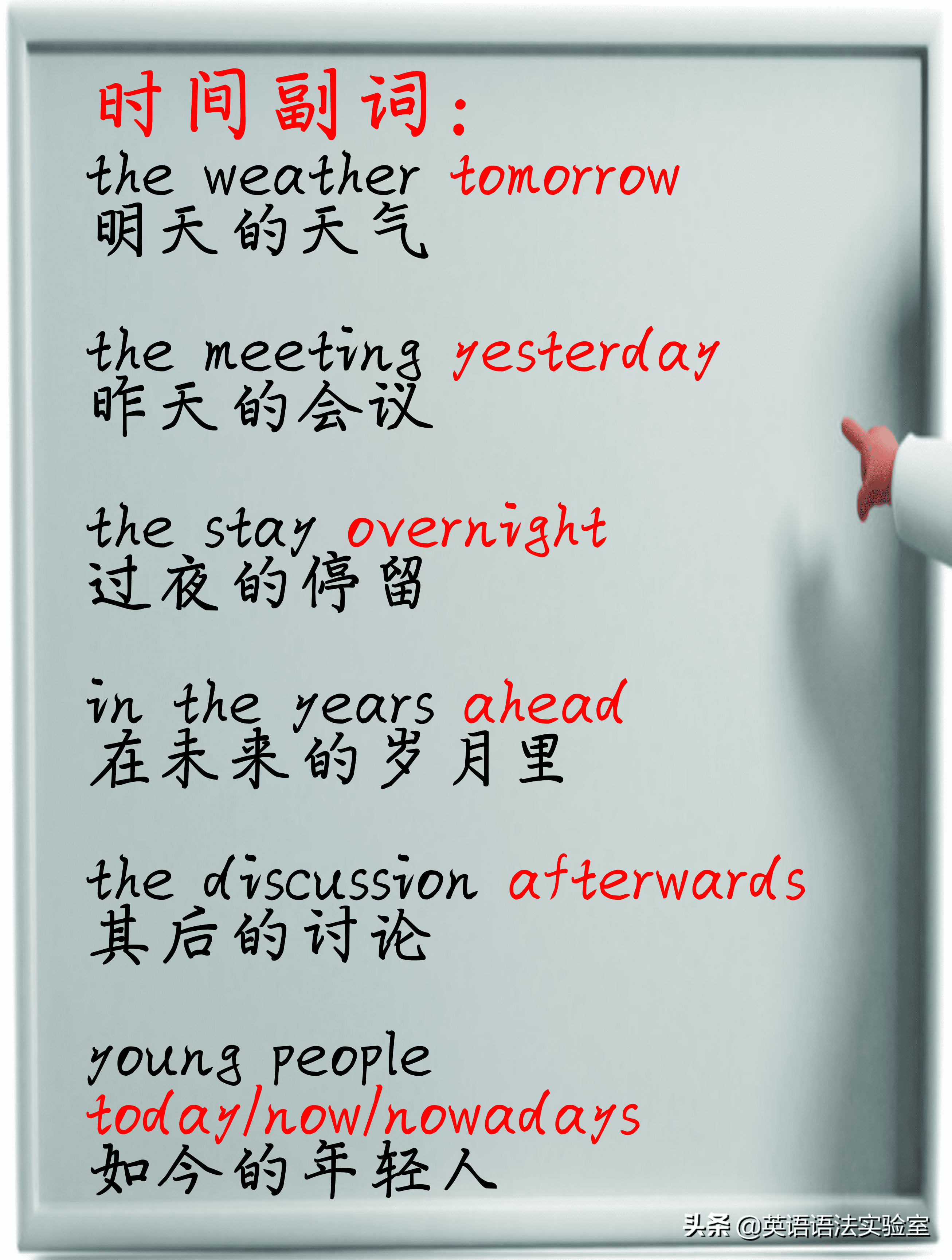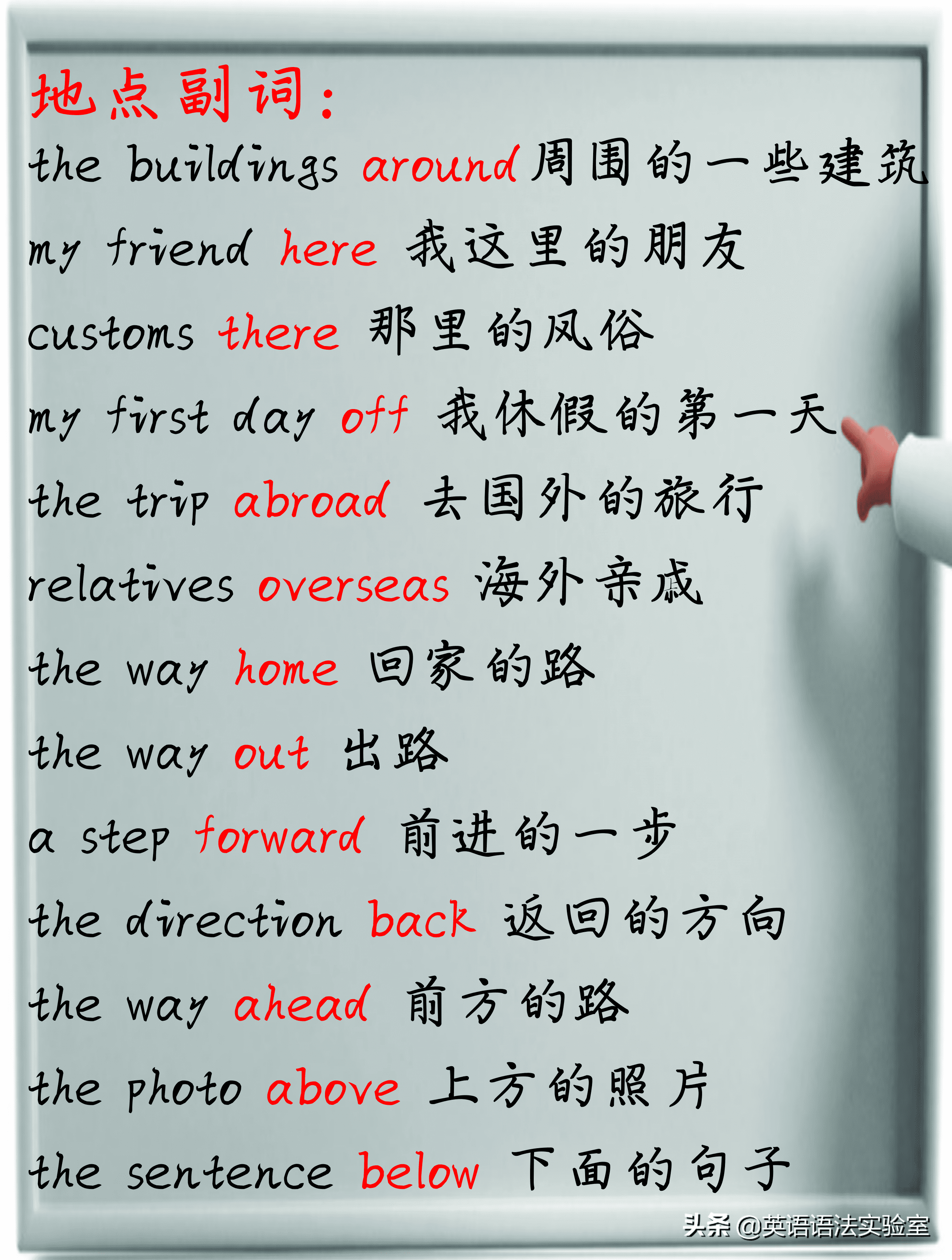在前文中我们讲过,英语最重要的4种词性是“名动形副”。形容词用来修饰名词,副词用来修饰名词以外的词(动词,形容词或另一个副词)。其实,某些副词也可以修饰名词(或名词短语),而且跟形容词一样,有些前置有些后置。只不过形容词是常常前置偶尔后置,而副词是常常后置偶尔前置,所以在前置定语中,我们没有单独列出副词。

后置副词:
表时间和地点的副词修饰名词短语时,通常位于名词之后。并且在翻译时,变“地”为“的”。
I saw her the week before.
我之前的一周还见过她。(before修饰the week)
One day apart seems like three years.
一日不见,如隔三秋。(apart修饰one day)


注意:这些时间和地点副词中的一些偶尔也可作前置定语。
The up train leaves at eight. 上行的火车八点发车。
Who was the then Prime Minister? 当时的总统是谁?
the upstairs telephone (=the telephone upstairs) 楼上的电话
the home journey (=the journey home) 回家的旅途
前置副词:
程度副词和焦点副词修饰名词短语时,通常位于名词短语之前。
焦点副词
I love Chinese food, especially Kung Pao Chicken.
我喜欢中餐,尤其是宫保鸡丁。
It's simply a matter of time.
这仅仅是时间问题。
When it comes to love, even the smartest persons becomes stupid.
在爱情中,甚至最聪明的人也会变成傻瓜。
程度副词
That was quite a party.
那次派对真不错。
I haven't seen John for simply ages.
我真的好久没见约翰了。
He is regarded as rather a fool. (=rather foolish)
他真是被当成了傻子。
注意:有些程度副词在构建名词短语时,先修饰数量词,然后二者共同修饰名词。注意下表中程度副词和数量词的搭配。
I have lived here for almost three years.
我在这住了快三年了。
I have quite a few friends.
我有相当多的朋友。

视频课程:


